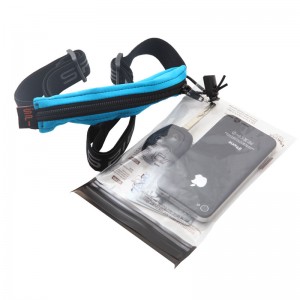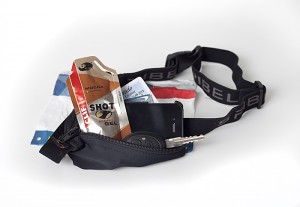I have to be honest for a second: I hate running. OK, hate is a strong word, dislike is maybe more accurate. As a triathlete, running makes up a big part of my training and races. So come to think of it, I should probably learn to love running. Over time I’ve gone from loathing to tolerance to acceptance and hopefully, I’ll soon make the last transition to eventually loving to run.
As a gear head, I love my toys and gadgets. Running is a far more palatable exercise when I’m tracking metrics on a GPS watch and listening to a seemingly endless library of 1,000 songs on my iPod. In Colorado, we have access to more than 100,000 square miles of gorgeous expansive views and countless trails and paths to choose from. I could step outside my home and start running (which admittedly, I do when strapped for time), but why should I with so many amazing running locations to choose from just a short drive away.
When stepping out of my car to go for a run, I’m faced with the need to bring along my iPhone, car keys, ID and credit card, and for longer runs a handful of gels. This bevy of adornments has, until now, ended up in a pocket of my workout shorts. Throughout the run, they would bang incessantly against my leg like the drum of a viking ship, a constant reminder of the drudgery of running.
Enter the SPIbelt.
The SPIbelt, engineered and manufactured in Austin, Texas, at first glance appears to be little more than slimmed down fanny pack. However, its goal was not to recreate the high-mark of fashion that is the mid-90s tourist, but rather to provide a svelte, discrete way to carry all of your necessary items during a run or any other activity.
The name SPI is an acronym for “Small Personal Item”. Attached to the soft, comfortable elastic waistband is an expandable pouch which, as if by magic seems to expand to easily, yet snugly house any items I need to take with me. The combination of elastic waistband and expandable pouch do an excellent job of keeping the contents from bouncing, jostling or hitting during even vigorous exercise.
In fact the SPIbelt is so comfortable, I’ve found that just a few strides into a run I practically forget that I am even wearing it.
I even chose to wear it during a recent half-marathon, where it did a great job of keeping my iPhone (and it’s aforementioned bottomless playlist), car keys and nutrition tucked away and out of the way until I needed them later on. After 13.1 miles, the SPIbelt was still snugly in place with nary a hint of shifting, bouncing or most importantly chafing.
The belt is available in a variety of configurations. For my testing, I used the SPIbelt with Waterproof Accessory. This SPIbelt is much like the basic belt, except it includes a MIL-spec waterproof “baggie” known as a LokSak. I’ve used and loved LokSaks for other camping and outdoor applications for years, so I was excited to see SPIbelt choose such a high-quality waterproof bag for protecting important items like cellphones and expensive smart keys. The LokSack is thoughtfully, yet securely tethered to the inside of the SPIbelt via a quick release bungy cord. As an added bonus, the LokSak allows full use of a phone’s multi-touch surface, all while being safely enclosed in the heavy-duty bag.
On the basic SPIbelt, the elastic fabric of the pouch stretches to a cavernous 7.5” x 4” x 4” of space, enough to accommodate even the largest of today’s smart phones. The only phone that couldn’t fit inside is Gordon Gekko’s infamous cell phone.
SPIbelts are available in a variety of configurations based on the basic concept. Users can select variations: with and without the waterproof sack; a version with belt loops for gels; Anti-electormagnetic field technology lined belts; a diabetic version which includes a hole for an insulin pump; and my personal favorite, the Endurance Series SPIbelt, which features a wider band, gel holsters and adjustable toggles for attaching a race bib. Combined with the mutlitude of available colors, there’s a seemingly endless array of choices.
I’ve been testing the SPIbelt for a few months, including casual runs and multiple races including half-marathons and triathlons. I didn’t realize how much I had come to rely on it until a recent run when I accidentally left it at home. Stuck with a pair of running shorts with a small open-topped pocket, my car keys bounced around perilously. I spent the whole time worrying about whether they would still be in place at the end of the run, all while awkwardly clutching my phone. I really wished that I had remembered my SPIbelt. But I persevered and finished my run, because I do in fact, love to run. Or at least, that’s what I keep telling myself. If I repeat it enough times, eventually I think I’ll believe it.
For more information on the SPIbelt, visit http://www.spibelt.com.









Thanks for the review! I have an original SPIbelt and looking to upgrade one that could more comfortably accommodate my giant iphone 6. This was very useful and more descriptive than what is on the SPIbelt website. It helped me make my decision to buy this version. Thanks again!